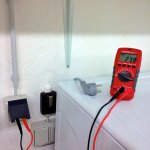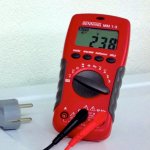S
six-point socket
Guest
Hi all,
So here's something I treated myself to fairly recently, it's a Digital Multimeter made by German manufacturer Benning. Benning, like Festool, caters to professionals and their testing, measuring and safety instruments stand second to none - it's professional equipment you can trust. Benning is to Germans what Fluke is to Americans.
[attachimg=1]
Honestly, I was tempted between the two brands - as buying tools is to me also a lot about wanting something special to work with. In the end I decided against getting a Fluke online and bought the Benning locally with my trusted dealer. After all were talking about a product here for which safety is the absolute number one concern.
I guess most, if not all of you know the basic functions of a digital multimeter. And I'm not going to bore you by going through all of them.
However I'd like to point out the diversity and amount of functions offered by the MM 1-3.
First of all of course: Voltage - AC and DC. Current - AC and DC. Resistance. Continuity/Diode. Frequency. Capacity. Temperature from -20 °C up to +800 °C. Additionally it offers a volt sensor - so you can find live wires/cables without having to touch/connect them. Measuring category: Cat III 600V.
[attachimg=2]
I think especially interesting features despite the obvious are: continuity, temperature and the volt sensor.
If you purchase an additional connection kit like I did with the MM 1-3 you can easily hook it up to 2 wires you are searching for in a junction box or outlet and leave it there, the beep is loud and clear, can be heard easily over 2 or 3 rooms. It's a function I never want to miss again - my old multimeter had it too, but wasn't really loud enough and I had to make my own clamps for it. ...
Temperature. It's great to be able to take temperature within such a large range.
The volt sensor makes it very easy to find a damaged portion of a cable or to quickly sort out wether current passes through a certain point (outlet, switch) or not.
The connection lines of the measuring leads and temperature feeler are encased/isolated with silicone which is much better than other "plastics".
Drawback: The additional connection kit will not fit into the multimeters pouch, this kinda "forces" you to buy their multimeter hardcase.
Kind regards,
Oliver
So here's something I treated myself to fairly recently, it's a Digital Multimeter made by German manufacturer Benning. Benning, like Festool, caters to professionals and their testing, measuring and safety instruments stand second to none - it's professional equipment you can trust. Benning is to Germans what Fluke is to Americans.
[attachimg=1]
Honestly, I was tempted between the two brands - as buying tools is to me also a lot about wanting something special to work with. In the end I decided against getting a Fluke online and bought the Benning locally with my trusted dealer. After all were talking about a product here for which safety is the absolute number one concern.
I guess most, if not all of you know the basic functions of a digital multimeter. And I'm not going to bore you by going through all of them.
However I'd like to point out the diversity and amount of functions offered by the MM 1-3.
First of all of course: Voltage - AC and DC. Current - AC and DC. Resistance. Continuity/Diode. Frequency. Capacity. Temperature from -20 °C up to +800 °C. Additionally it offers a volt sensor - so you can find live wires/cables without having to touch/connect them. Measuring category: Cat III 600V.
[attachimg=2]
I think especially interesting features despite the obvious are: continuity, temperature and the volt sensor.
If you purchase an additional connection kit like I did with the MM 1-3 you can easily hook it up to 2 wires you are searching for in a junction box or outlet and leave it there, the beep is loud and clear, can be heard easily over 2 or 3 rooms. It's a function I never want to miss again - my old multimeter had it too, but wasn't really loud enough and I had to make my own clamps for it. ...
Temperature. It's great to be able to take temperature within such a large range.
The volt sensor makes it very easy to find a damaged portion of a cable or to quickly sort out wether current passes through a certain point (outlet, switch) or not.
The connection lines of the measuring leads and temperature feeler are encased/isolated with silicone which is much better than other "plastics".
Drawback: The additional connection kit will not fit into the multimeters pouch, this kinda "forces" you to buy their multimeter hardcase.
Kind regards,
Oliver


